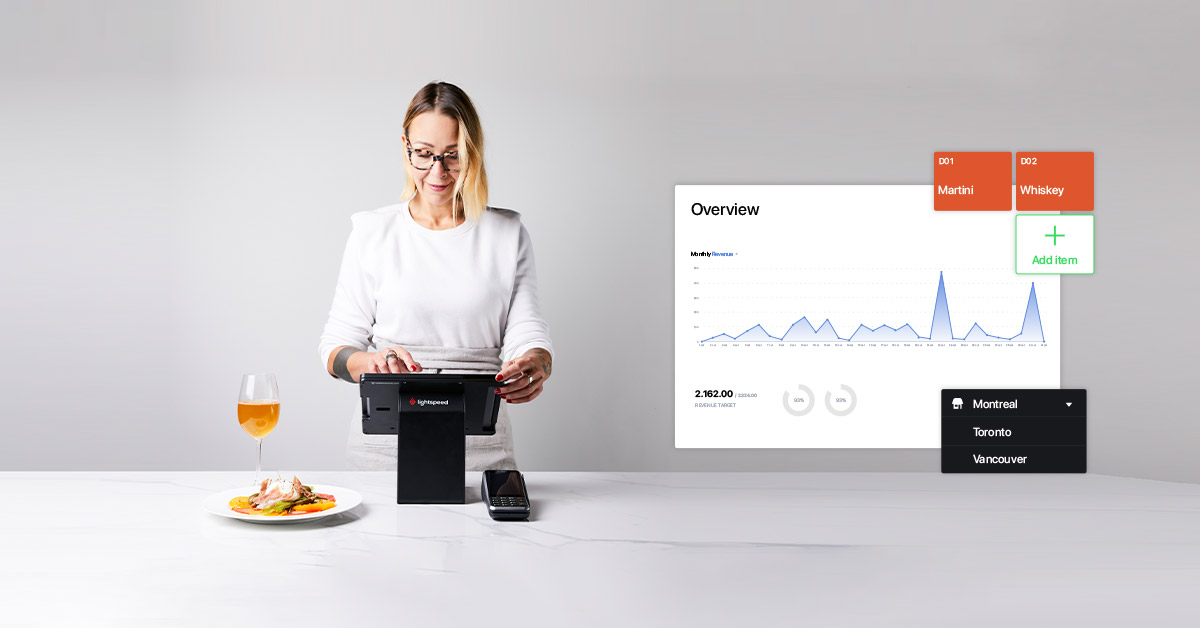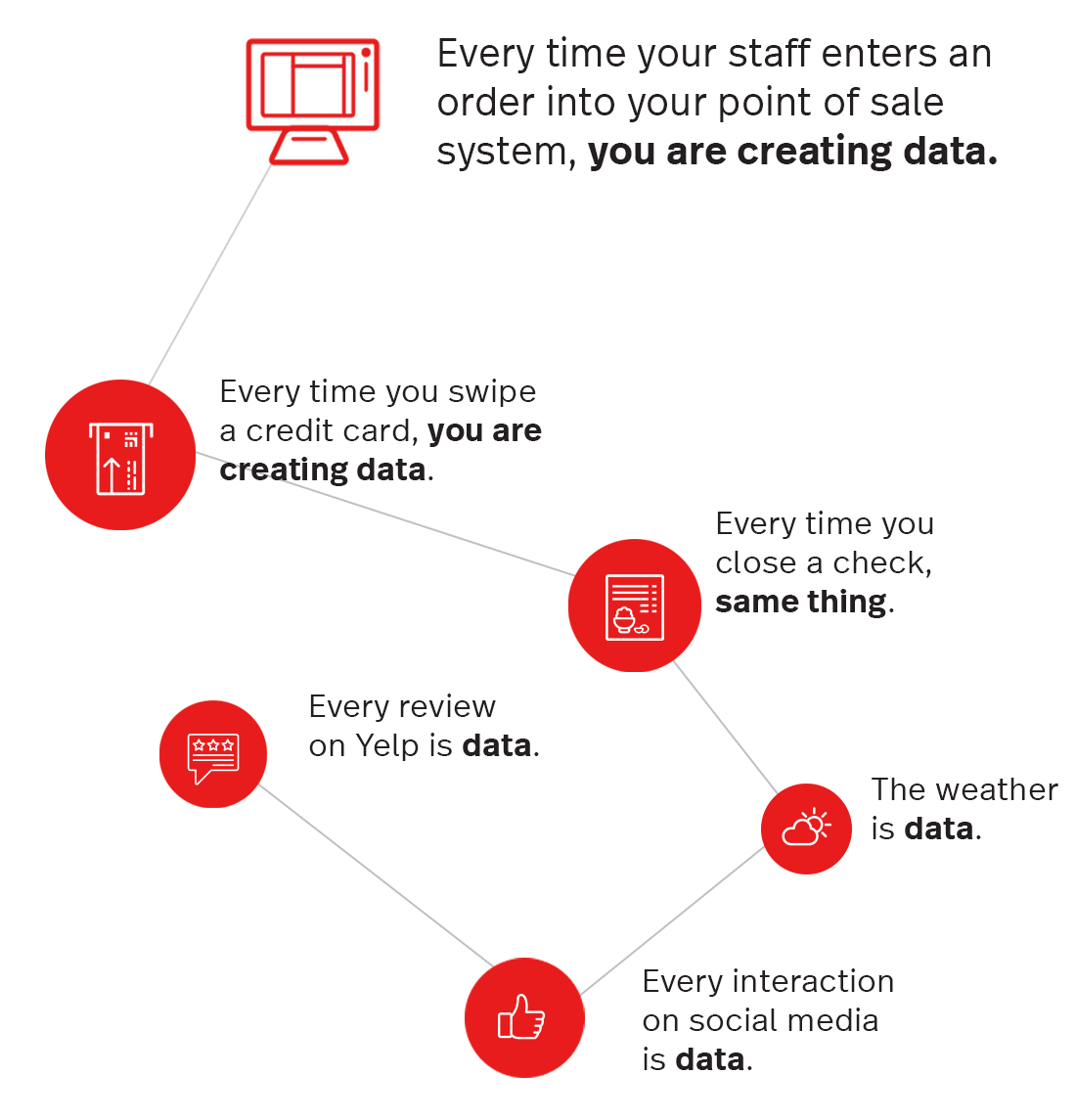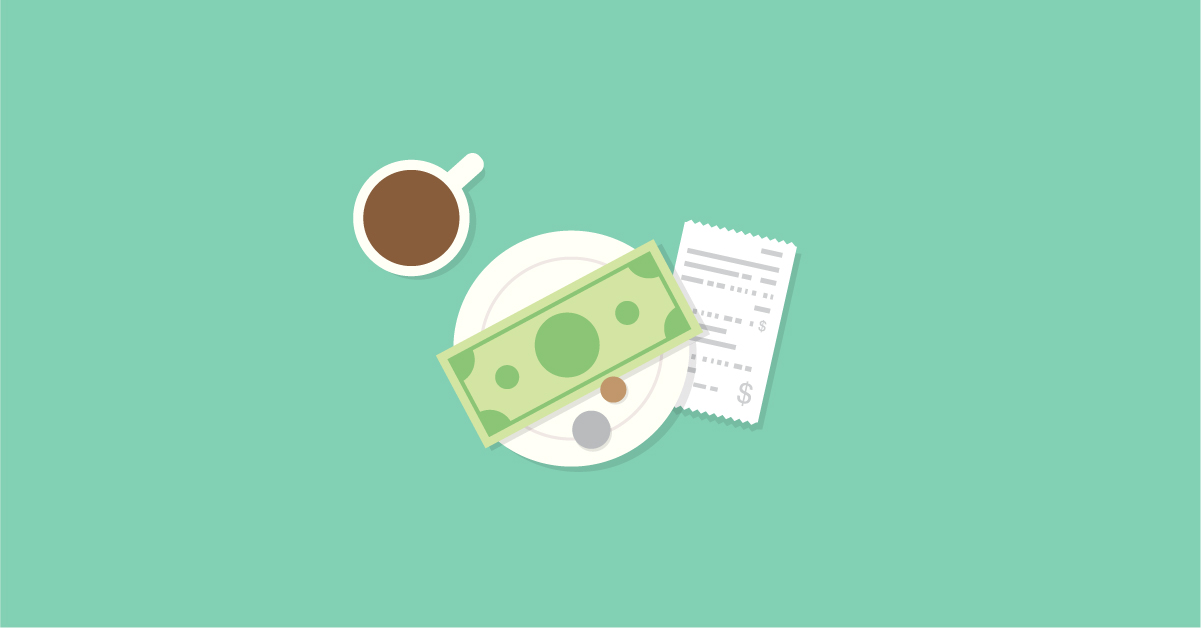
Your cloud-based POS system is armed with dozens of restaurant analytics, insights and data. Every time an employee enters an order, swipes a credit card or closes a check, they’re creating data. Every Yelp review, Facebook post and retweet on Twitter—and even the weather—have an effect on your bottom line.
These individual pieces of data might not tell you much, but in aggregate they tell an incredible story about your business. What are you doing with that information?
Read on to learn about eight metrics you can measure to boost traffic, revenue, and customer satisfaction using the restaurant data analytics in your POS.
- Improve table turnover
- Reduce food loss
- Right-size your staffing needs
- Reduce discounts and comps
- Manage staff turnover
- Track server performance
- Improve marketing
- Create smarter menus
Help your business thrive in the new era of hospitality
Our free guide will walk you through the future-proof restaurant tactics that’ll add flexibility to your business—a key to thriving in the new world of hospitality.
A note about restaurant analytics
Restaurant analytics are the combination of raw data, turned into easy-to-use insights that help you make better business decisions. Today, every piece of information—from wait time to tip distribution—can be accurately gathered, measured and presented to owners in a way that’s clear, prompting a real-time response and forward-thinking plans for long-term success. Let’s dive in.

1. Improve table turnover
To serve customers well, and hopefully create repeat business, you’ll need to move the dining experience along at your tables. A restaurant POS system can help facilitate ordering and even offer tabletop payment, so customers can enjoy a casual bite, leaving satisfied and likely to return for another meal down the line.
Plus, with faster orders and payment, your waitstaff is free to accommodate more customers, further improving table turnover without unnecessarily rushing guests who want to linger a little longer.
2. Reduce food loss
Your restaurant POS can allow you to control the inventory going in and out of your kitchen, making your staff more accountable for the way they cook, deliver and account for every item ordered.
Food is your restaurant’s inventory—don’t let careless staff over-pile a plate, under-serve a valued customer, or simply misuse the expected items in a way that hurts both your reputation and the bottom line.
3. Right-size your staffing needs
Wouldn’t it be nice to know who your top and lowest performing servers are? Yes, we all have that cocktail of gut feelings and experience. However, you should back up your decisions with data. Dive deeper and find out the exact cost of a bad server on your business.
If you always maintain the same number of kitchen and waitstaff throughout the week, but only certain nights warrant extra servers, your restaurant analytics will be able to show you where losses occur, and where you might be able to better utilize their manpower.
4. Reduce discounts and comps
You might think that a few percentage points of comps aren’t very much, but it’s just the sort of thing that can shrink your margins. There is no way there were 22 birthdays last night at the bar. Monitor staff and dishes easily with restaurant analytics to find out what was really going on.
5. Manage staff turnover
Though losing staff members is never easy, something as simple as optimizing a floor layout, or modifying which staff members handle certain table sizes can go a long way toward resuming fully covered, completely efficient services. Even with a reduced staff, the right restaurant analytics can help keep productivity and morale high.
6. Track server performance
Use the POS analytics on server performance to help you improve staff training, identify strong servers and schedule smarter.
- Discover strengths and weaknesses. Is one server selling 60% of all wine bottles? Find out their secret and pair them with servers who have low bottle numbers to help them improve their sales.
- Decrease turnover. Turnover happens for a variety of reasons. You can’t stop it but it can be minimized. Check in with your lowest-performing servers to find out how you can work with them to improve their job satisfaction.
- Pair top servers with VIPs. When a reservation for a VIP guest comes in, you can identify your top servers and ensure at least one of them is scheduled and assigned to that guest’s table.
7. Improve marketing
One of your most powerful tools for filling seats is strong digital marketing—and when you are able to see the successes and losses of campaigns or tailor them to individual preferences, that makes them even stronger.
Whether it’s a weekly Taco Tuesday special or something more temporary like a Mother’s Day prix fixe menu, tracking a campaign within your POS analytics will let you compare sales data to see if your efforts are bringing in more business or are just a waste of time. If it’s the latter, you can then change your strategy to something more profitable.
And remember, marketing efforts don’t stop when a guest walks in the door. Use your POS analytics to delight VIP guests with a complimentary glass of their favorite wine or a free dessert. Simple gestures like remembering someone’s name or what dish they enjoy most go a long way too.
8. Create smarter menus
Through menu insights, you can gain a better grasp on what is or isn’t selling, and how to make your menu more profitable.
If you didn’t have restaurant analytics to look back on, you would probably think your best-selling item is the most profitable—but they may not be accurate. Through your POS data you’ll be able to see which items have customers coming back again and again. Do you sell a lot of grilled chicken sandwiches to guests only to never see them again? It’s time to figure out why.
On the flip side, it is possible that one of your lower-selling items may have some unlocked potential. Your restaurant analytics will be able to tell you if one of these items creates a higher-than-average percent of return guests. Highlighting this item on the menu, training servers to promote it, or updating its name or description could help you sell more of that dish and, most importantly, create more repeat visitors.
You may not have a magic 8-ball for predicting restaurant success, but given the amount of data coming from your restaurant POS system, there are few reasons for unnecessary losses or expenses when the answers are right at your fingertips.
How are real restaurants using data analytics?
The best of the best restaurants are utilizing all the analytics available to them to grow their business. This especially rings true for Locals 8 Restaurant Group, a multi-location restaurant group using Lightspeed’s restaurant data analytics to boost profits and become more efficient.
Your restaurant POS system can help you track everything from employee performance and costs to menu performance and more. Need help choosing your restaurant technology? Chat to one of our point of sale experts.

News you care about. Tips you can use.
Everything your business needs to grow, delivered straight to your inbox.




